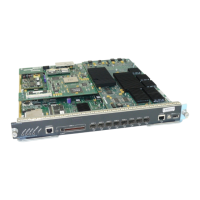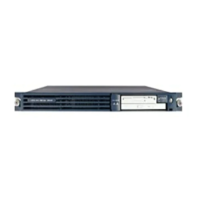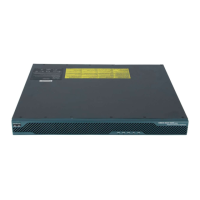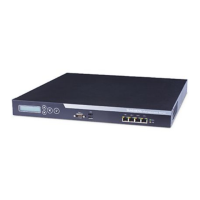2-12
Catalyst Supervisor Engine 32 PISA Cisco IOS System Message Guide, Release 12.2ZY
OL-11469-02
Chapter 2 Messages and Recovery Procedures
C6K_MPLS_RP Messages
Error Message %C6K_MPLS_LC-3-REWRITEFAIL: null adj for incoming label [dec]
Explanation
The specified incoming label has a NULL adjacency entry. The hardware adjacency
entry might not be programmed because the incoming label has the NULL adjacency entry. This
condition is an internal software error.
Recommended Action Copy the error message exactly as it appears on the console or in the system
log. Contact your Cisco technical support representative with the output of the show mpls
forwarding-table labels command.
Error Message %C6K_MPLS_LC-3-TCAMFAIL: failed to insert label [dec] to TCAM
Explanation
The system failed to allocate TCAM entry for an MPLS entry for the specified label.
The TCAM might be full. Some MPLS packets might be forwarded by the software.
Recommended Action Reduce the number of routes in the system to free up TCAM space. When
enough free TCAM space is available, the software starts the TCAM recovery mechanism
automatically. The TCAM recovery mechanism reinstalls the MPLS label entries that previously
failed.
C6K_MPLS_RP Messages
This section contains Catalyst 6500 series switch and Cisco 7600 series router LAN Multiprotocol Label
Switching (C6K_MPLS_RP) messages.
C6K_MPLS_RP-2
Error Message %C6K_MPLS_RP-2-NO_IP_ACL_RSVD_VLAN: IP ACL features will not be
applied to MPLS->IP packets due to a lack of internal VLAN resources
Explanation
The total number of VLANs in use might have exceeded 4096. The VLAN resources are
shared by VLANs used for SVI, VLANS used for subinterfaces, hidden VLANs used for routed
ports, and internal VLANs used for some VRFs. An internal VLAN is needed when an IP ACL
feature is applied to a VRF interface. If the total number of VLANs in use exceeds 4096, no more
internal VLANs can be allocated, so IP ACL features will not be applied to MPLS-to-IP packets.
Recommended Action Reduce the total number of VLANs in use by removing SVI interfaces,
subinterfaces, and/or VRF interfaces.

